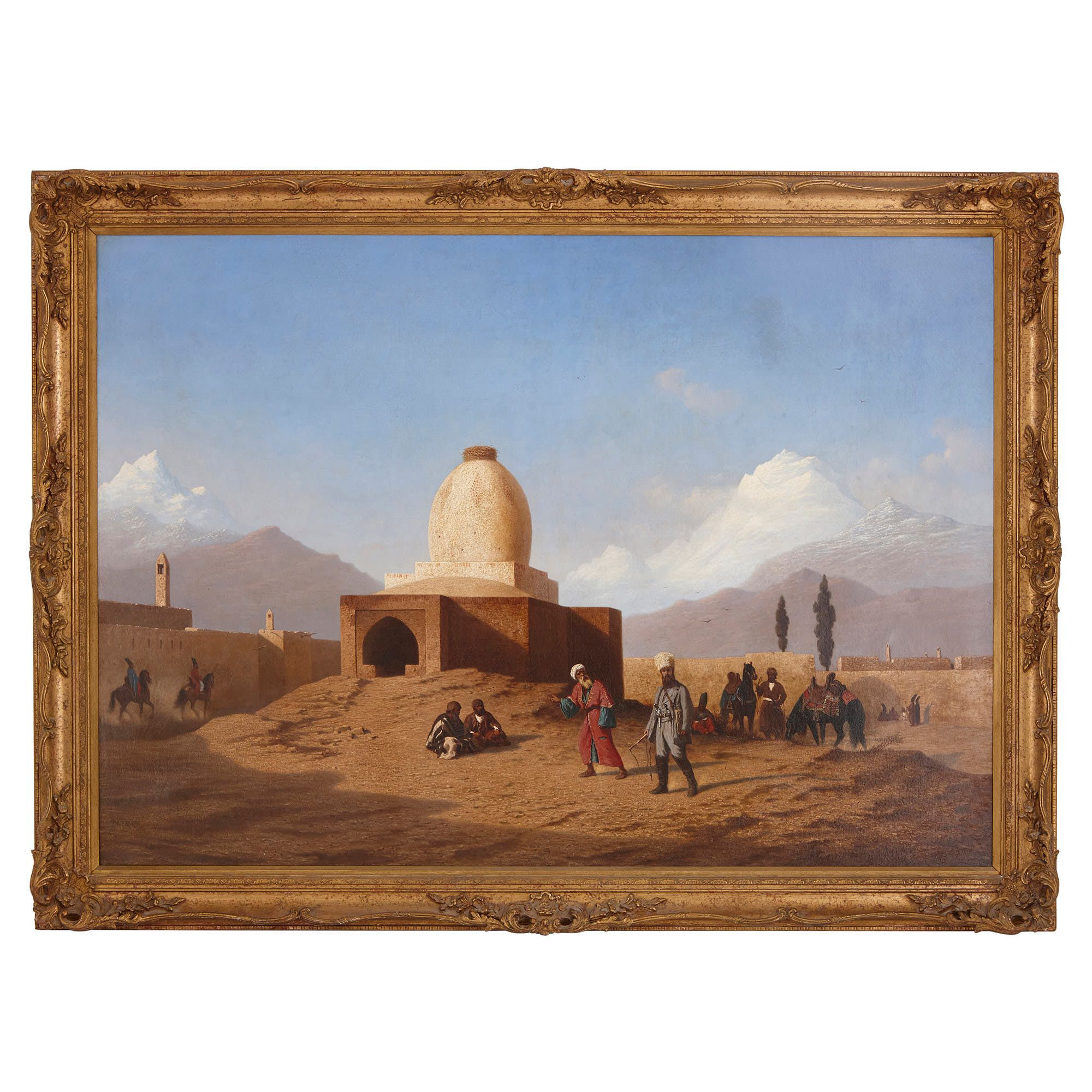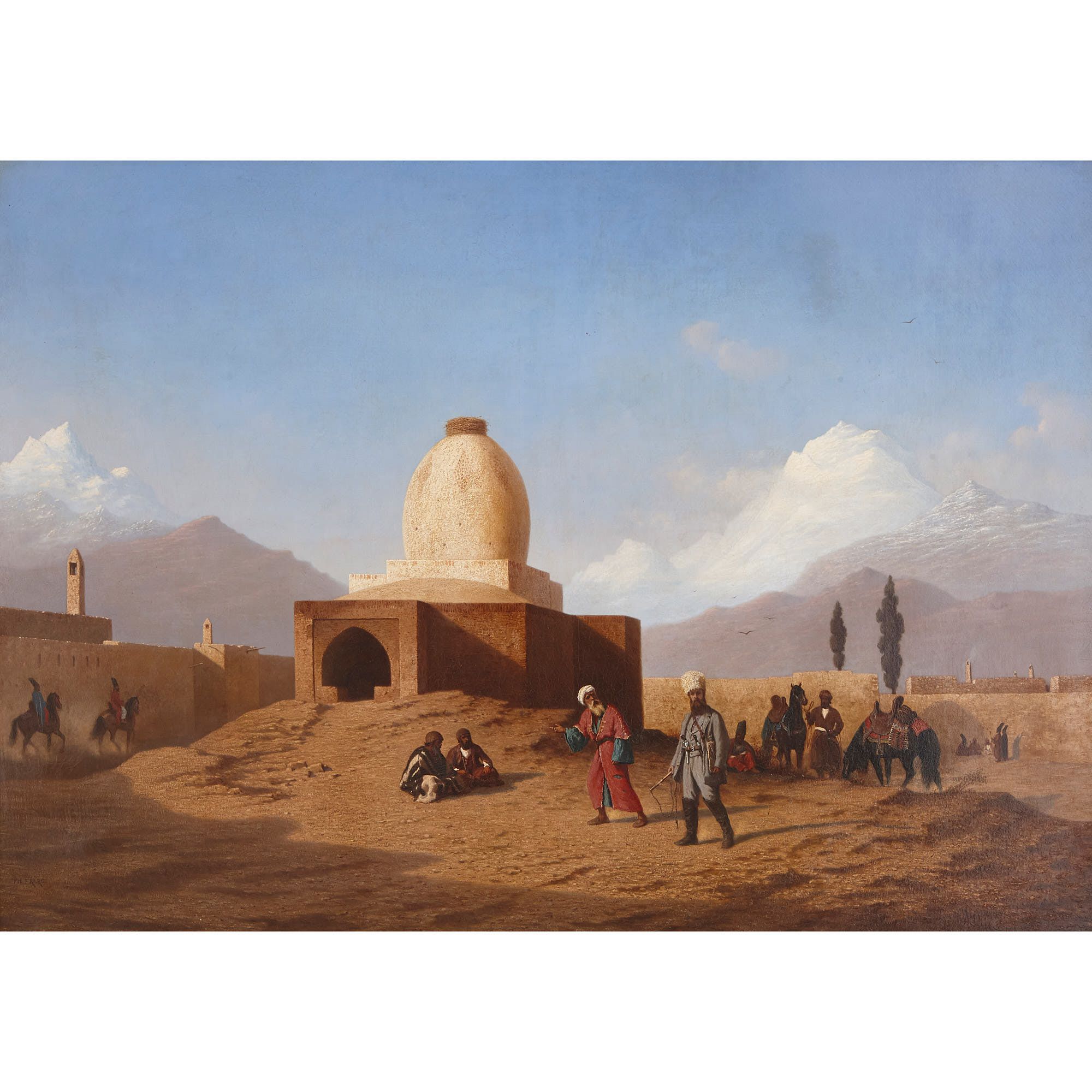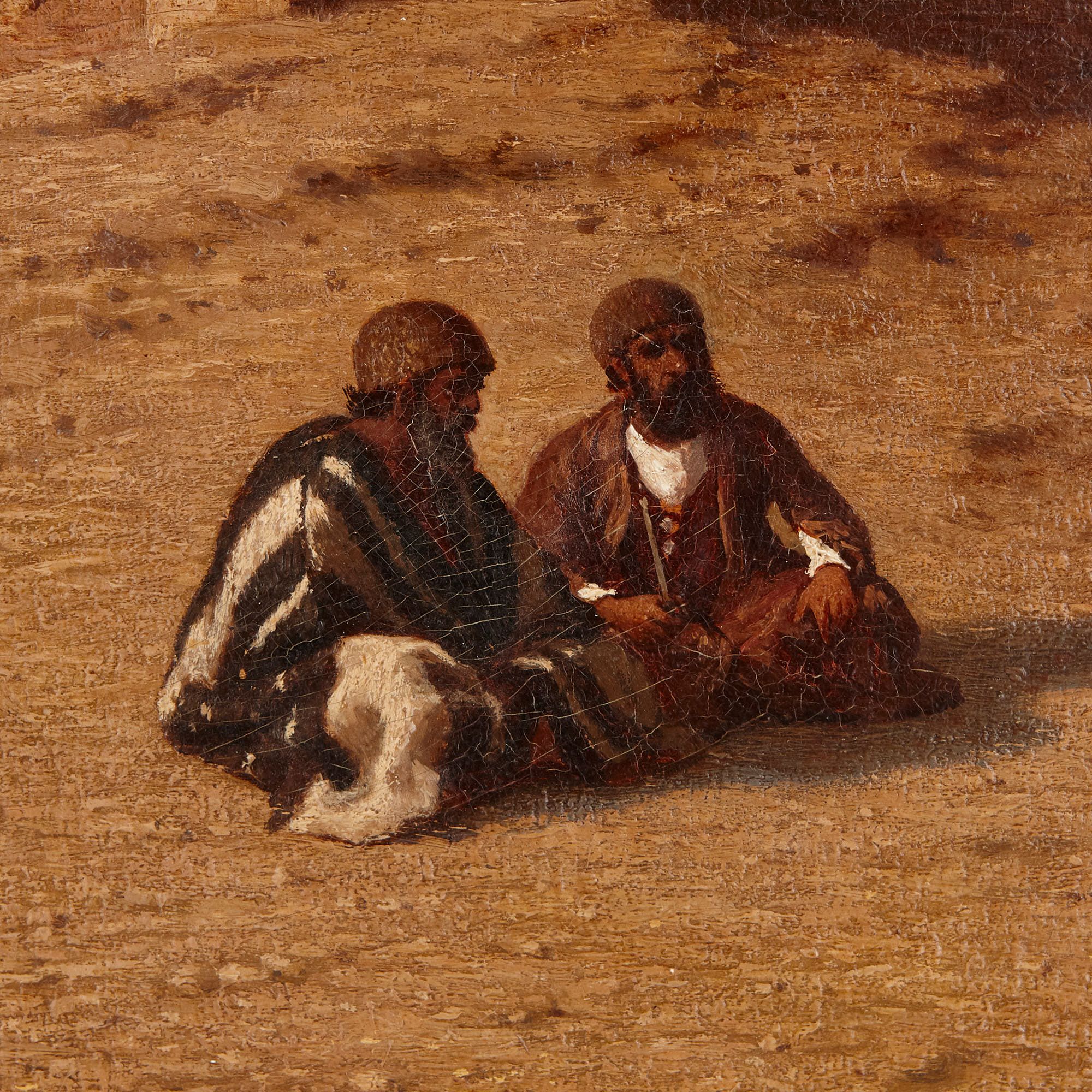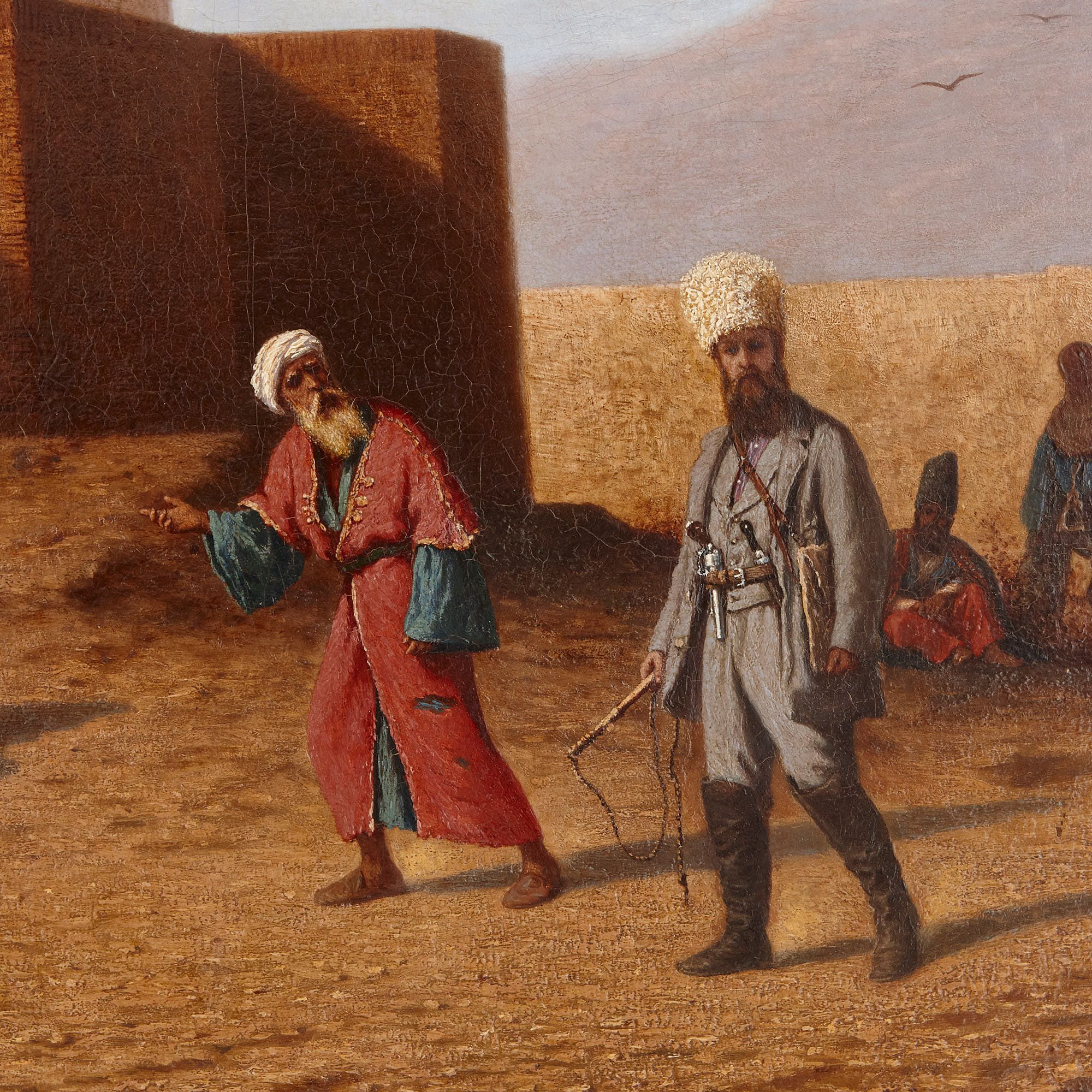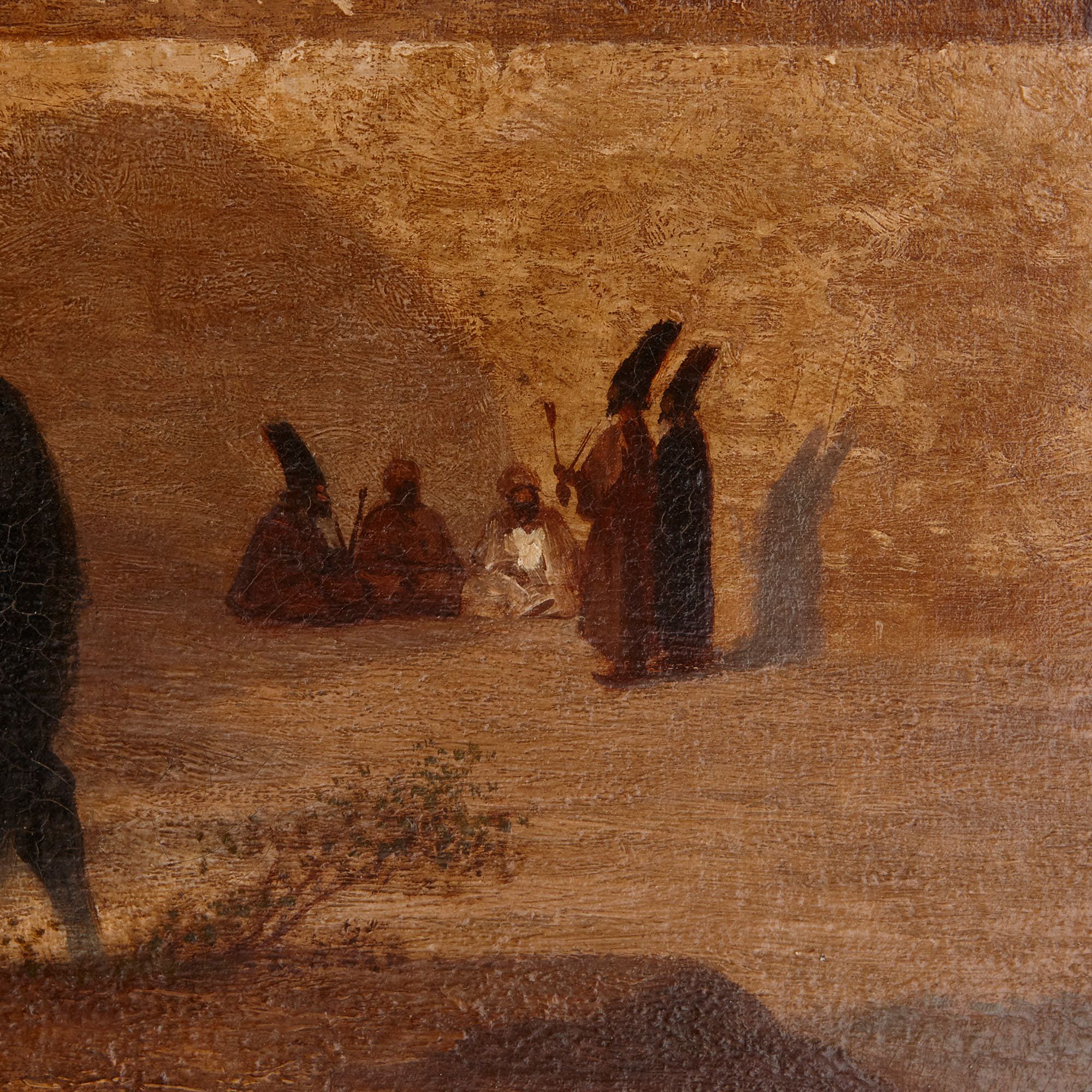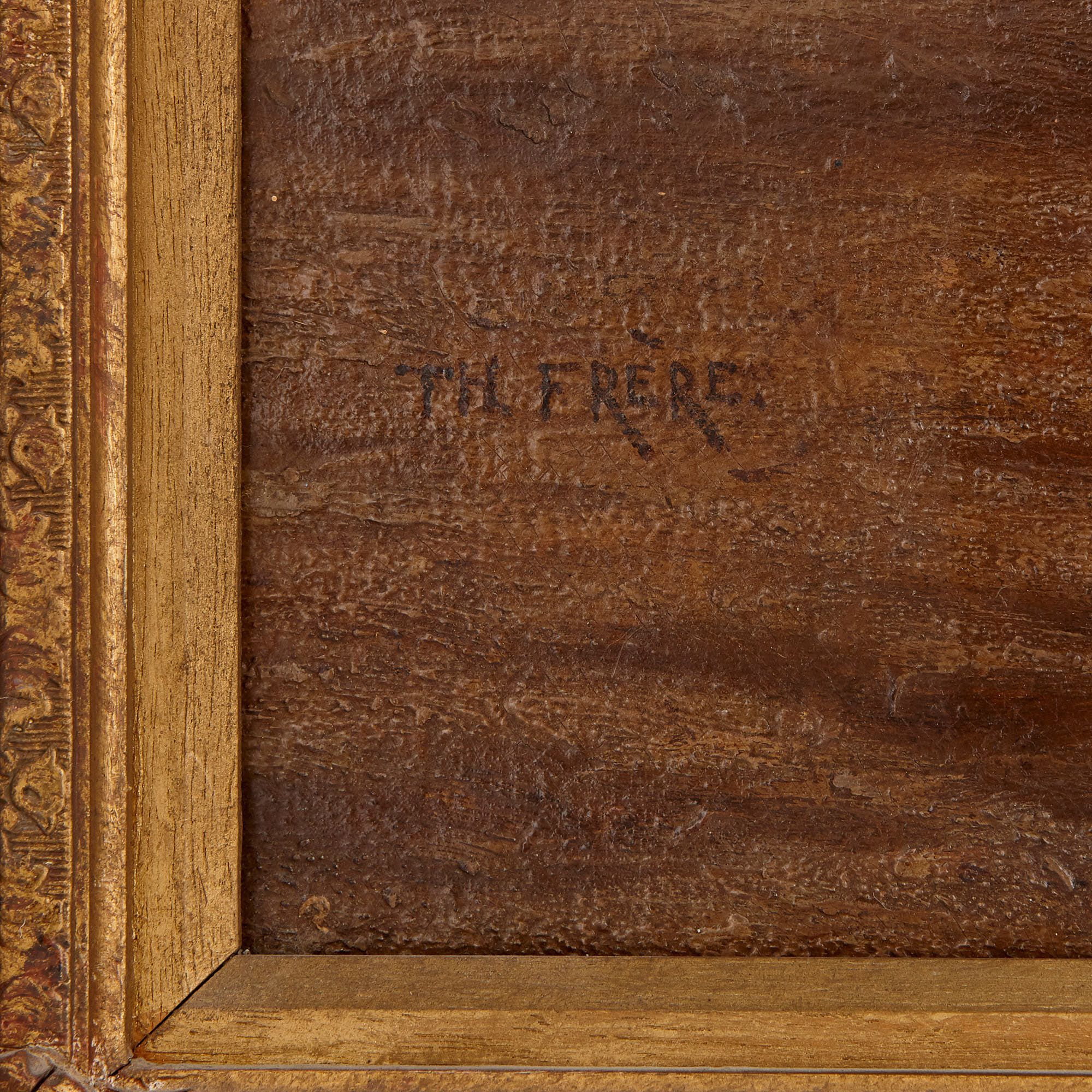This exceptional painting depicts the Jewish pilgrimage site, the Tomb of Esther and Mordechai in Hamadan, Iran. Figures and horses occupy the foreground and the Alvand range of the Zagros Mountains is seen in the distance.
The famous artist Charles-Théodore Frère (French, 1814-1888) was commissioned to paint this scene by one John Wright-Osmaston (English 1831-1901) to provide a visual record of the patron’s travels. Osmaston documented this journey in his book ‘Old Ali’, or ‘Travels Long Ago’, which was published in London in 1881. In this, Osmaston writes, ‘My travels through the countries of Norway, Sweden, Russia, Persia, Babylonia, Assyria, and Asia Minor, were made during the latter part of the year 1860 and beginning of 1861, occupying a period of about eight months, a journey of eleven thousand miles.’ Osmaston journeyed on horseback with little more than a money belt and revolver. He was accompanied from Tehran to Baghdad and through the Ottoman Empire by a man called ‘Ali’—after whom his book was titled—whose real name was ‘Agha Baba’. He met several other notable figures along the way, including the Governor of the Volga Steamer Company, a prince and Khan in Tehran and a Turkish Pasha in Baghdad.
Charles-Théodore Frère had never travelled to Iran and so he based this painting on sketches and descriptions provided in Osmaston’s book. In Osamaston's text, he describes his visit to the city of Hamadan in Iran and how he was struck by the beauty of the landscape there. Of the Alvand range, he writes ‘It was exceedingly beautiful […] the mountains looking very remarkable in their icy covering, being curiously divided into an exact half by the snow-line; the upper half, in its mantle of white, the very picture of cold; the lower half, in its mantle of brown, hot-looking tawny, and bare.’ We see this contrast depicted in this painting, with the darker mountains in the near distance and the white snowy peaks just beyond them.
In ‘Old Ali’, Osmaston also describes entering the Tomb of Esther and Mordecai. He writes, ‘A tall, old Israelite, with a long, white beard that had seen seventy summers at least... led us in through a low doorway. [...] We squeezed through, passing into a small cell, and then, stooping very low, almost crept into another. This was under the dome. And here stood two wooden sarcophagi, one in memory of Esther, the other of Mordecai’. In keeping with this account, in Frère’s painting we see an old man with a white beard who looks out at the viewer and gestures towards the monument, as though inviting us to enter.
Charles-Théodore Frère was a famous French Orientalist painter who had journeyed to parts of the Middle East and North Africa in search of subjects for his paintings. Other works by Frère can be viewed today in major art collections, including the Metropolitan Museum of Art in New York and the Hermitage Museum in St. Petersburg. This painting is signed ‘Th Frere’ in the lower left corner.
Canvas: Height 100cm, width 141cm, depth 2cm
Frame: Height 115cm, width 156cm, depth 8cm





